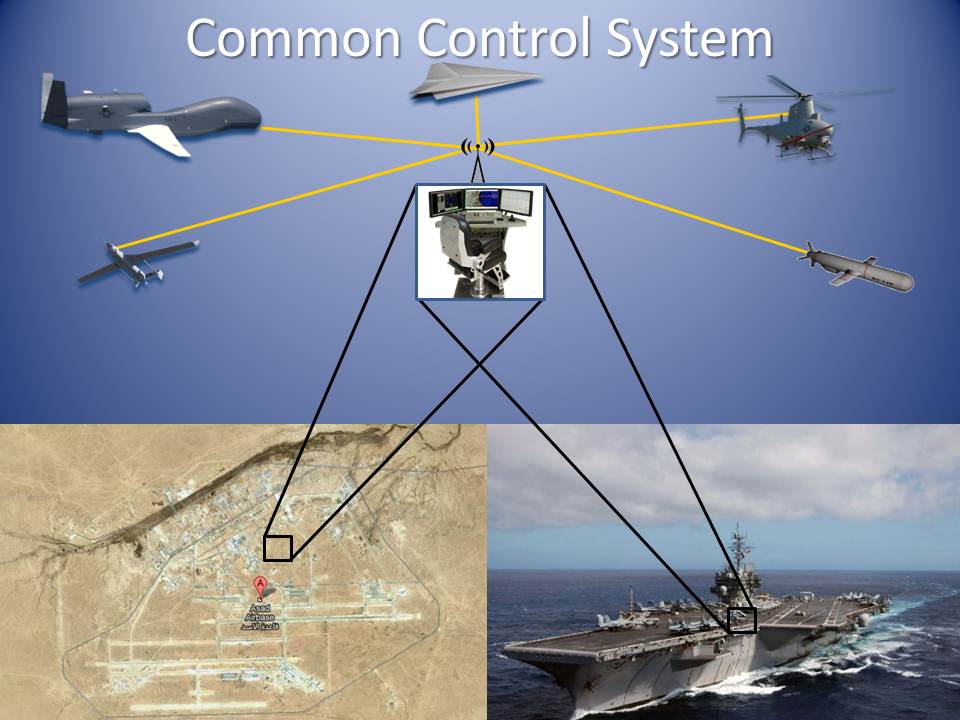Common Control System

U.S. Navy photo illustration
The Common Control System is a program to provide U.S. Navy unmanned vehicles hardware and software that works across several different systems. The open architecture technology provides interoperability and cost savings across multiple unmanned platforms. According to the Naval Air Systems Command, CCS is designed to provide a "common framework, user interface and components that can be integrated and tested on a variety of emerging or legacy platforms."
In addition to primary mission control, CCS will support mission planning and operations in dynamic airspace, along with external messaging and communication. The platform will also facilitate processing, exploitation and Dissemination (PED) of information from sensor payloads, plus other support and infrastructure services. CCS has been integrated into the UCLASS, MQ-8C Fire Scout, MQ-4C Triton, and other platforms.
The Common Control System Explained
NAVAIR CCS Video
Littoral Combat Ship Deploys with Upgraded UAS Controls
27 April 2016 - Raytheon Company and the U.S. Navy's Naval Air Systems Command have deployed advanced mission control for the MQ-8 Fire Scout, an unmanned helicopter, aboard the Littoral Combat Ship USS Coronado (LCS-4), which will deploy this summer.
Navy control hardware and Raytheon control software were combined for robust, flexible command and control of Fire Scout missions in littoral waters. USS Coronado is one of the Navy's newest Littoral Combat Ships, designed to operate close to shorelines. Coronado's deployment of Fire Scout extends the fleet's situational awareness.
NAVAIR Integrates UCLASS Common Control System Software
10 September 2014 - NAVAIR engineers recently installed new software for the Navy’s Unmanned Carrier-Launched Airborne Surveillance and Strike (UCLASS) system’s control station at the program’s Naval Air Station Patuxent River lab.
In early September, the UCLASS team integrated the latest iteration of Common Control System (CCS) software into the next-generation unmanned effort, laying the groundwork for potential use across multiple domains –airborne, land and subsurface.